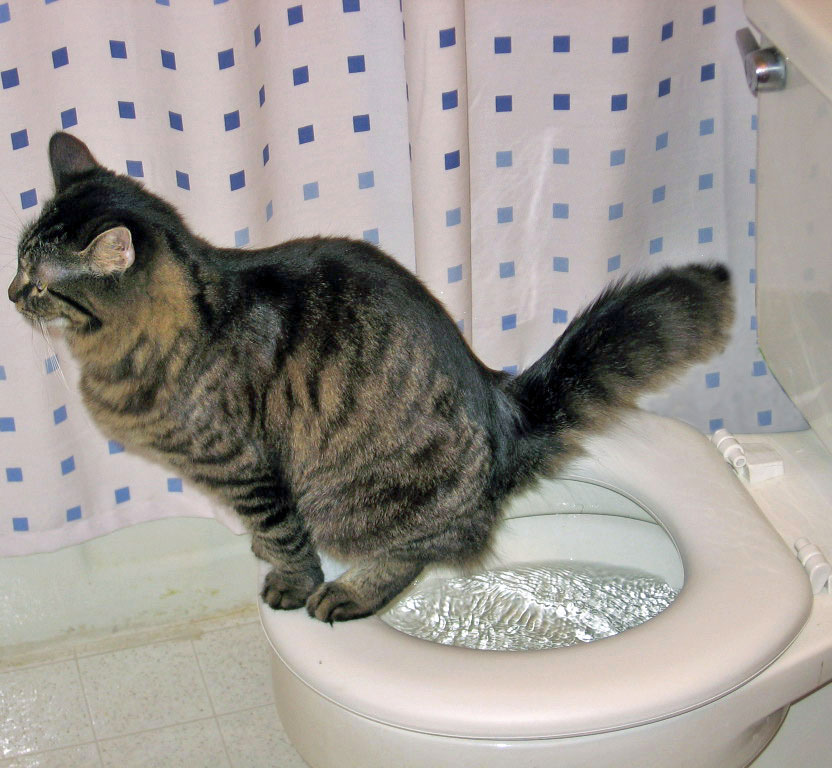Why Flushing Cat Poop Down Your Toilet Isn't a Good Idea - Tips for Safer Disposal
Why Flushing Cat Poop Down Your Toilet Isn't a Good Idea - Tips for Safer Disposal
Blog Article
Listed here in the next paragraph you will discover some brilliant information relating to How to Dispose of Cat Poop and Litter Without Plastic Bags.

Intro
As pet cat proprietors, it's necessary to bear in mind just how we deal with our feline pals' waste. While it might appear hassle-free to purge pet cat poop down the commode, this technique can have detrimental effects for both the setting and human health.
Alternatives to Flushing
Thankfully, there are safer and a lot more responsible means to throw away cat poop. Take into consideration the complying with options:
1. Scoop and Dispose in Trash
One of the most common method of dealing with feline poop is to scoop it into an eco-friendly bag and toss it in the garbage. Make sure to utilize a committed litter inside story and deal with the waste promptly.
2. Usage Biodegradable Litter
Select eco-friendly cat litter made from materials such as corn or wheat. These trashes are environmentally friendly and can be safely thrown away in the trash.
3. Bury in the Yard
If you have a lawn, think about burying pet cat waste in an assigned area far from vegetable yards and water resources. Be sure to dig deep adequate to prevent contamination of groundwater.
4. Mount a Pet Waste Disposal System
Invest in a pet garbage disposal system particularly created for pet cat waste. These systems utilize enzymes to break down the waste, decreasing smell and environmental influence.
Wellness Risks
In addition to environmental issues, flushing pet cat waste can additionally present health and wellness risks to human beings. Feline feces may consist of Toxoplasma gondii, a parasite that can trigger toxoplasmosis-- a possibly severe health problem, especially for expectant ladies and people with damaged body immune systems.
Environmental Impact
Flushing cat poop introduces unsafe pathogens and bloodsuckers right into the water system, posturing a substantial threat to marine communities. These impurities can adversely affect aquatic life and compromise water high quality.
Final thought
Accountable family pet ownership prolongs past providing food and shelter-- it also entails correct waste management. By refraining from flushing cat poop down the toilet and going with different disposal approaches, we can decrease our ecological footprint and safeguard human wellness.
Why Can’t I Flush Cat Poop?
It Spreads a Parasite
Cats are frequently infected with a parasite called toxoplasma gondii. The parasite causes an infection called toxoplasmosis. It is usually harmless to cats. The parasite only uses cat poop as a host for its eggs. Otherwise, the cat’s immune system usually keeps the infection at low enough levels to maintain its own health. But it does not stop the develop of eggs. These eggs are tiny and surprisingly tough. They may survive for a year before they begin to grow. But that’s the problem.
Our wastewater system is not designed to deal with toxoplasmosis eggs. Instead, most eggs will flush from your toilet into sewers and wastewater management plants. After the sewage is treated for many other harmful things in it, it is typically released into local rivers, lakes, or oceans. Here, the toxoplasmosis eggs can find new hosts, including starfish, crabs, otters, and many other wildlife. For many, this is a significant risk to their health. Toxoplasmosis can also end up infecting water sources that are important for agriculture, which means our deer, pigs, and sheep can get infected too.
Is There Risk to Humans?
There can be a risk to human life from flushing cat poop down the toilet. If you do so, the parasites from your cat’s poop can end up in shellfish, game animals, or livestock. If this meat is then served raw or undercooked, the people who eat it can get sick.
In fact, according to the CDC, 40 million people in the United States are infected with toxoplasma gondii. They get it from exposure to infected seafood, or from some kind of cat poop contamination, like drinking from a stream that is contaminated or touching anything that has come into contact with cat poop. That includes just cleaning a cat litter box.
Most people who get infected with these parasites will not develop any symptoms. However, for pregnant women or for those with compromised immune systems, the parasite can cause severe health problems.
How to Handle Cat Poop
The best way to handle cat poop is actually to clean the box more often. The eggs that the parasite sheds will not become active until one to five days after the cat poops. That means that if you clean daily, you’re much less likely to come into direct contact with infectious eggs.
That said, always dispose of cat poop in the garbage and not down the toilet. Wash your hands before and after you clean the litter box, and bring the bag of poop right outside to your garbage bins.
https://trenchlesssolutionsusa.com/why-cant-i-flush-cat-poop/

I have been very fascinated with How to Dispose of Cat Poop and Litter Without Plastic Bags and I really hope you liked the new blog posting. Do you know another person who is in the market for the niche? Please feel free to share it. Thank-you for taking the time to read it.
Click Here Report this page